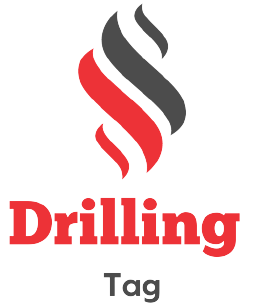Introduction
In the vast world of oil and gas exploration, the importance of drill bits cannot be overstated. These cutting tools are at the heart of drilling operations, making the difference between success and a costly setback. In this comprehensive guide, we’ll examine the intricacies of oil and gas drill bit types, highlighting key tools that increase efficiency and productivity in the energy sector.

Understanding Oil and Gas Drill Bit
let’s start with the basics. Oil and gas drill bits are designed to penetrate the Earth crust to reach valuable energy resources. These bits come in a variety of configurations, each designed for distinct drilling challenges and geological conditions.
1.Roller cone bits
Roller cone bits are most common in the oil and gas industry. They are characterized by their three conical rollers, each with individual cutting teeth. These bits excel at drilling through relatively soft rock formations, making them a preferred choice for many drilling tasks.
2. PDC Bits (Polycrystalline Diamond Compact Bits)
PDC bits represent a technological leap forward in drill bit design. They incorporate diamond-enhanced cutting surfaces, making them incredibly effective at drilling through hard and abrasive formations. PDC bits are known for their durability and speed.
3. Diamond Bits:
When extreme hardness is encountered, diamond bits, often embedded with industrial diamonds or other extremely hard materials, are the answer. These bits are designed for the toughest rock formations and offer exceptional performance and longevity.
4. Directional drill Bit
In directional drilling, where accuracy is most important, directional bits come in handy. These bits can be configured to move the bit in specific directions, allowing for more complex drilling patterns and targets with greater accuracy.
Conclusion:
The world of oil and gas drilling is constantly evolving, and drill bits are at the forefront of these developments. Understanding the different drill bit types is essential to optimizing drilling operations, ensuring cost efficiency and protecting the environment in this important industry. Whether you are involved in upstream exploration, drilling, or well completion, the right choice of drill bit can make all the difference in your success.
FAQS
Q1: What are the main factors to consider when choosing an oil and gas drill bit type?
A1: When choosing the type of drill bit, factors such as geological formation, rock hardness, drilling depth and desired drilling speed play an important role. Drill bit design must be matched to specific drilling conditions to optimize performance.
Q2: What are the advantages of using PDC (Polycrystalline Diamond Compact) bits in oil and gas drilling?
A2: PDC bits are known for their exceptional durability and performance in drilling through hard and abrasive rock formations. Their diamond-enhanced cutting surfaces lead to faster penetration rates and longer life, making them a preferred choice for many drilling applications.
Q3: When should I consider using roller cone drill bit in oil and gas drilling?
A3: Roller cone drill bit are effective for drilling through relatively soft rock formations. They are suitable for applications where speed is more important than longevity, such as in some oil and gas exploration scenarios.
Q4: What is directional drilling, and why would I need directional drill bits?
A4: Directional drilling involves driving the wellbore in specific directions. Directional drill bits are critical to this process, allowing precision in reaching targets located at different angles or depths. This technology is often used in reservoir optimization and wellbore placement.
Q5: Are there environmentally friendly drill bit options for oil and gas drilling?
A5: The industry is increasingly focusing on environmentally friendly drilling solutions. Some companies are developing drill bits with less environmental impact, such as using advanced materials to increase bit longevity and reduce the frequency of bit changes, which can reduce waste and improve efficiency. Is.
Q6: Can the drill bit technology adapt to different drilling conditions in real time?
A6: Yes, some drill bits are equipped with smart technology that can adapt to changing drilling conditions in real time.These bits use sensors and data analysis to adjust their drilling parameters for optimal performance, making them a valuable asset in challenging drilling environments.

